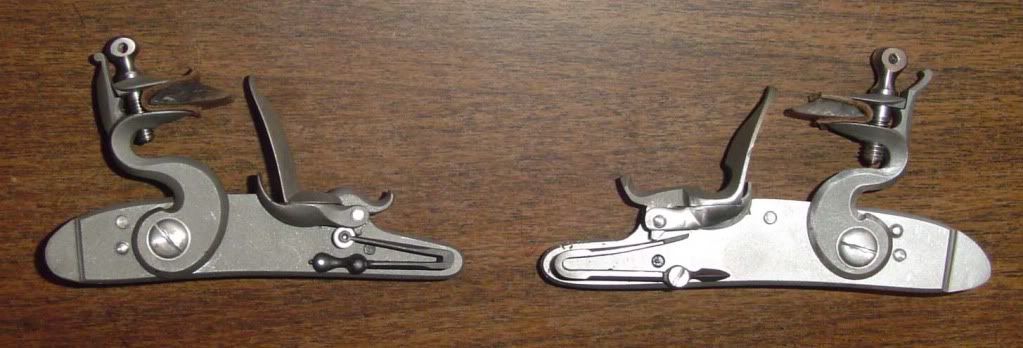user 13289
40 Cal.
- Joined
- Dec 7, 2008
- Messages
- 166
- Reaction score
- 14
Where did the notion of rounded lockplate=tennessee get established? From some single Tennessee builder maybe, or some single reference book? (i don't know i don't have those yet). What i do have is conversation with two different men in their 70's who have made part of their life and livings over the last thirty or fifty years-shooting and collecting and making black-power weaponry. One recalls a local fellow, now passed, who had 100 Original Southern/TN rifles-he looked at 'em.
These guys have experience far beyond mine and they both tell me that it was done _both_ ways. I have seen several originals with pointy locks.
I can't imagine a TN builder turning down a shipment of english locks because they had pointy plates. I contend that they made do with what they could get. And i don't care for the round back lock plates.

i have other images, but no urls and don't care to take the time this morning to dig up the sources or go play on flikker...have a bbl to inlet.
I would not argue against the notion that "more" southern/tn rifles had round-back lock plates, but find the "only rounded plates were used" argument to be completely off kilter wrt the whole of the surviving specimens.
++ i put up a photo, maybe it has to be approved?
These guys have experience far beyond mine and they both tell me that it was done _both_ ways. I have seen several originals with pointy locks.
I can't imagine a TN builder turning down a shipment of english locks because they had pointy plates. I contend that they made do with what they could get. And i don't care for the round back lock plates.

i have other images, but no urls and don't care to take the time this morning to dig up the sources or go play on flikker...have a bbl to inlet.
I would not argue against the notion that "more" southern/tn rifles had round-back lock plates, but find the "only rounded plates were used" argument to be completely off kilter wrt the whole of the surviving specimens.
++ i put up a photo, maybe it has to be approved?







